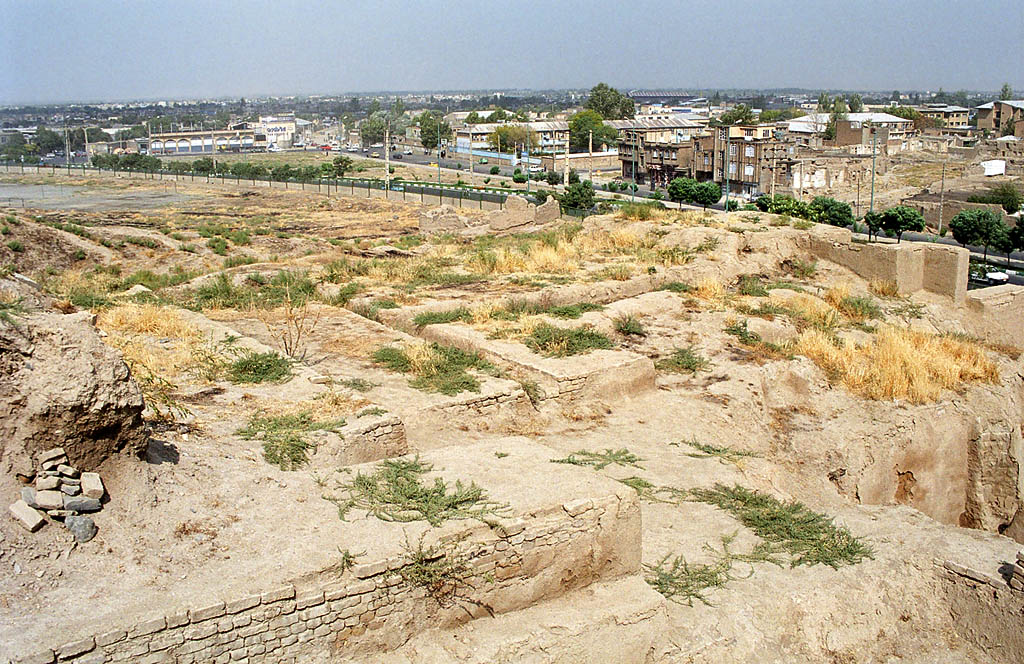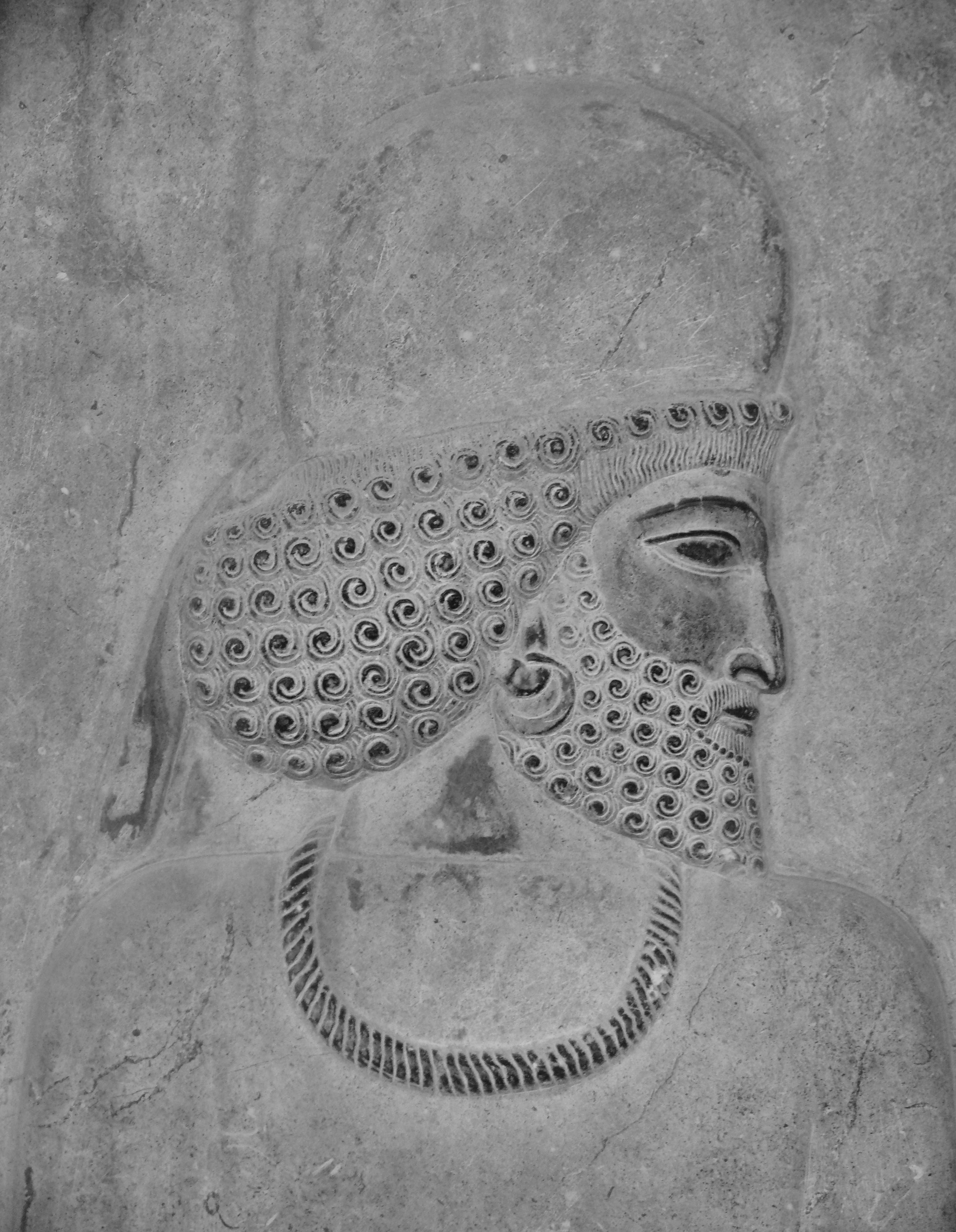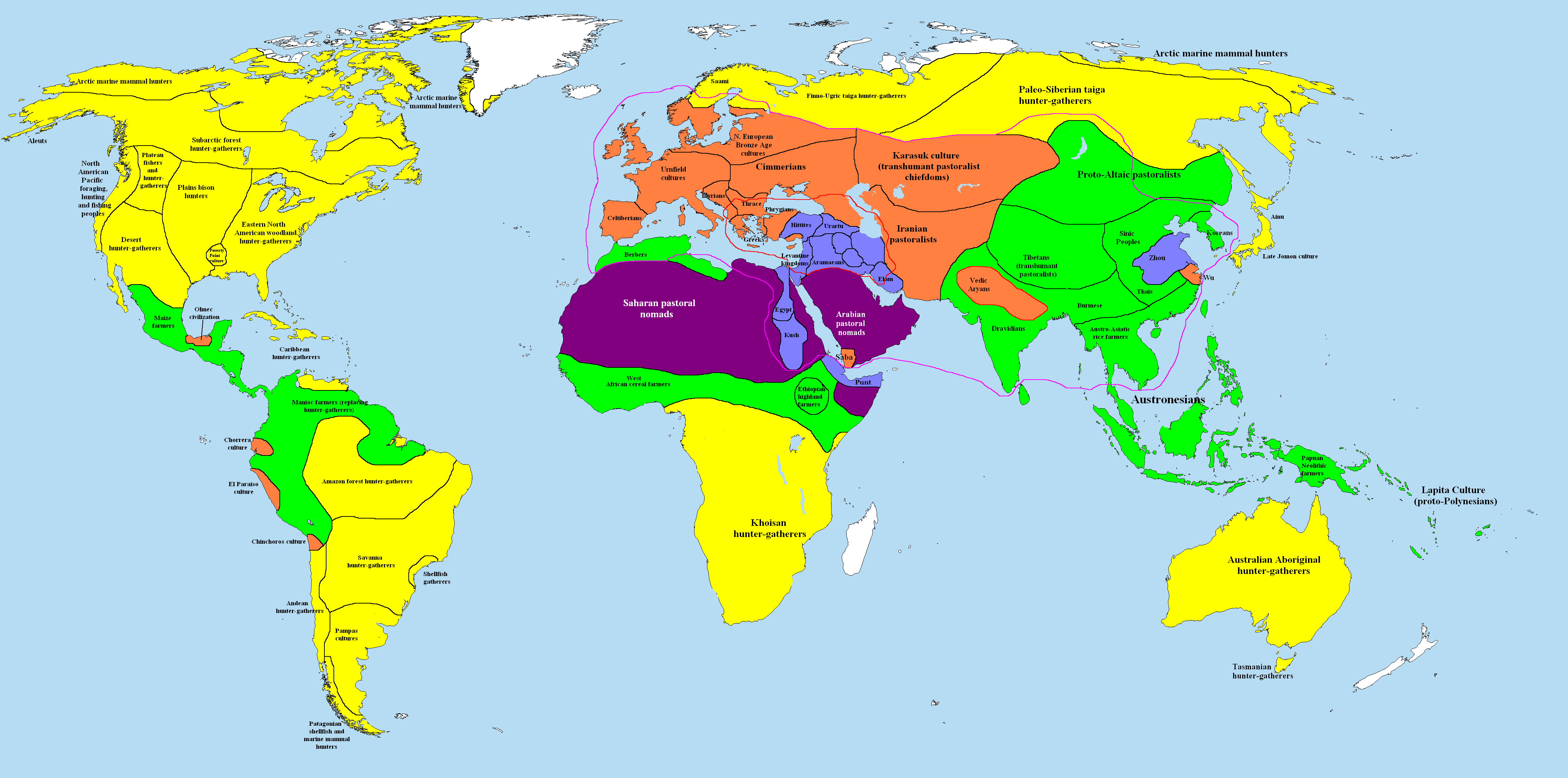|
Medians
The Medes (Old Persian: ; Akkadian: , ; Ancient Greek: ; Latin: ) were an ancient Iranian people who spoke the Median language and who inhabited an area known as Media between western and northern Iran. Around the 11th century BC, they occupied the mountainous region of northwestern Iran and the northeastern and eastern region of Mesopotamia located in the region of Hamadan (Ecbatana). Their consolidation in Iran is believed to have occurred during the 8th century BC. In the 7th century BC, all of western Iran and some other territories were under Median rule, but their precise geographic extent remains unknown. Although they are generally recognized as having an important place in the history of the ancient Near East, the Medes have left no written source to reconstruct their history, which is known only from foreign sources such as the Assyrians, Babylonians, Armenians and Greeks, as well as a few Iranian archaeological sites, which are believed to have ... [...More Info...] [...Related Items...] OR: [Wikipedia] [Google] [Baidu] |
Deioces
Deioces ( grc, Δηιόκης), from the Old Iranian ''Dahyu-ka-'', meaning "the lands" (above, on and beneath the earth), was the founder and the first ''shah'' as well as priest of the Median Empire. His name has been mentioned in different forms in various sources, including the Ancient Greek historian Herodotus, who has written his name as Δηιόκης (''Dēiokēs''). The exact date of the era of Deioces' rule is not clear and probably covered most of the first half of the seventh century BC. According to Herodotus, Deioces governed for 53 years. Based on Herodotus's writings, Deioces was the first Median king to have gained independence from the Neo-Assyrian Empire. He contemplated the project and plan of forming a single Median government; and in an anarchistic era of the Medes, he tried to enforce justice in his own village and earn a credibility and fame as a neutral judge. Thus, the territory of his activity was expanded and the peoples of other villages also resorted ... [...More Info...] [...Related Items...] OR: [Wikipedia] [Google] [Baidu] |
Media (region)
Media ( peo, 𐎶𐎠𐎭, Māda, Middle Persian: ''Mād'') is a region of north-western Iran, best known for having been the political and cultural base of the Medes. During the Achaemenid period, it comprised present-day Azerbaijan, Iranian Kurdistan and western Tabaristan. As a satrapy under Achaemenid rule, it would eventually encompass a wider region, stretching to southern Dagestan in the north. However, after the wars of Alexander the Great, the northern parts were separated due to the Partition of Babylon and became known as ''Atropatene'', while the remaining region became known as ''Lesser Media''. History Under the Medes In 678 BC, Deioces united the Median tribes of Media and made the first Iranian Empire. His grandson Cyaxares managed to unite all Iranian tribes of Ancient Iran and made his empire a major power. When Cyaxares died he was succeeded by his son, Astyages, who was the last king of the Median Empire. Under the Achaemenids In 553 BC, Cyrus the Grea ... [...More Info...] [...Related Items...] OR: [Wikipedia] [Google] [Baidu] |
Old Persian
Old Persian is one of the two directly attested Old Iranian languages (the other being Avestan language, Avestan) and is the ancestor of Middle Persian (the language of Sasanian Empire). Like other Old Iranian languages, it was known to its native speakers as (Iranian).''cf.'' , p. 2. Old Persian appears primarily in the inscriptions, clay tablets and seal (device), seals of the Achaemenid dynasty, Achaemenid era (c. 600 BCE to 300 BCE). Examples of Old Persian have been found in what is now Iran, Romania (Gherla), Armenia, Bahrain, Iraq, Turkey and Egypt, with the most important attestation by far being the contents of the Behistun Inscription (dated to 525 BCE). Recent research (2007) into the vast Persepolis Fortification Archive at the Oriental Institute at the University of Chicago unearthed Old Persian tablets, which suggest Old Persian was a written language in use for practical recording and not only for royal display. Origin and overview As a written language, Old ... [...More Info...] [...Related Items...] OR: [Wikipedia] [Google] [Baidu] |
Monarchy
A monarchy is a form of government in which a person, the monarch, is head of state for life or until abdication. The political legitimacy and authority of the monarch may vary from restricted and largely symbolic (constitutional monarchy), to fully autocratic (absolute monarchy), and can expand across the domains of the executive, legislative, and judicial. The succession of monarchs in many cases has been hereditical, often building dynastic periods. However, elective and self-proclaimed monarchies have also happened. Aristocrats, though not inherent to monarchies, often serve as the pool of persons to draw the monarch from and fill the constituting institutions (e.g. diet and court), giving many monarchies oligarchic elements. Monarchs can carry various titles such as emperor, empress, king, queen, raja, khan, tsar, sultan, shah, or pharaoh. Monarchies can form federations, personal unions and realms with vassals through personal association with the monarch, whi ... [...More Info...] [...Related Items...] OR: [Wikipedia] [Google] [Baidu] |
11th Century BC
The 11th century BC comprises all years from 1100 BC to 1001 BC. Although many human societies were literate in this period, some of the individuals mentioned below may be apocryphal rather than historically accurate. The world in the 11th century BC Events * 1089 BC: Melanthus, legendary King of Athens, dies after a reign of 37 years and is succeeded by his son Codrus. * 1069 BC: Ramses XI dies, ending the Twentieth Dynasty. He is succeeded by Smendes I, who founds the Twenty-first Dynasty. * 1068 BC: Codrus, legendary King of Athens, dies in battle against Dorian invaders after a reign of 21 years. Athenian tradition considers him the last king to have held absolute power. Modern historians consider him the last king whose life account is part of Greek mythology. He is succeeded by his son Medon. * 1050 BC: Philistines capture the Ark of the Covenant from Israel in battle. (Approximate date) * 1048 BC: Medon, King of Athens, dies after a reign of 20 years and is s ... [...More Info...] [...Related Items...] OR: [Wikipedia] [Google] [Baidu] |
Northern Iran
Northern Iran consists of the southern border of the Caspian Sea and the Alborz mountains. It includes the provinces of Gilan, Mazandaran, and Golestan. (Ancient kingdom of Hyrcania, medieval region of Tabaristan). The major provinces, Gilan and Mazandaran, are covered with dense forests, snow-covered mountains and impressive sea shores. The major cities are Rasht, Gorgan, Sâri, Bâbol, Amol, Qaem Shahr, Gonbad-e Kavus, Anzali, and Lahijan. Northern Iran has numerous villages, particularly Massulé, appreciated by travellers. Northern Iran was a trendy spot during the Pahlavi era, especially among foreign tourists. It was a luxurious place that provided all types of modern recreational facilities as well as tourism infrastructure. Today, it's mostly visited by domestic tourists. Language Iran is a very diverse country. "Dialect wise" there are different sub-languages and dialects of native speakers in the north of Iran as well the rest of the country. From the east ... [...More Info...] [...Related Items...] OR: [Wikipedia] [Google] [Baidu] |
Western Iran
Western Iran consists of Armenian Highlands, Northern Zagros and the rich agricultural area of the Khuzestan Plain in the south. It includes the provinces of Kordestan, Kermanshah, Ilam, Hamadan and Lorestan. Some references also count West Azerbaijan Province and Khuzestan Province to this region. The major cities are Sanandaj, Kermanshah, Ilam, Hamadan, Khorramabad sometimes Urmia and Ahvaz. Climate *Humid continental climate in the north. *Hot-summer Mediterranean climate in the north. *cold semi-arid climate in the Zagros mountains. * Warm summer continental climate all over the central mountain ranges. *Hot desert climate in Khuzestan. See also * Northern Iran * Southern Iran * Eastern Iran * Central Iran * Northwestern Iran Azerbaijan or Azarbaijan ( fa, آذربایجان, ''Āzarbāijān'' ; az-Arab, آذربایجان, ''Āzerbāyjān'' ), also known as Iranian Azerbaijan, is a historical region in northwestern Iran that borders Iraq, Turkey, the Nakhch ... [...More Info...] [...Related Items...] OR: [Wikipedia] [Google] [Baidu] |
Iranian Peoples
The Iranian peoples or Iranic peoples are a diverse grouping of Indo-European peoples who are identified by their usage of the Iranian languages and other cultural similarities. The Proto-Iranians are believed to have emerged as a separate branch of the Indo-Iranians in Central Asia around the mid-2nd millennium BC. At their peak of expansion in the mid-1st millennium BC, the territory of the Iranian peoples stretched across the entire Eurasian Steppe, from the Great Hungarian Plain in the west to the Ordos Plateau in the east and the Iranian Plateau in the south.: "From the first millennium b.c., we have abundant historical, archaeological and linguistic sources for the location of the territory inhabited by the Iranian peoples. In this period the territory of the northern Iranians, they being equestrian nomads, extended over the whole zone of the steppes and the wooded steppes and even the semi-deserts from the Great Hungarian Plain to the Ordos in northern China." The ... [...More Info...] [...Related Items...] OR: [Wikipedia] [Google] [Baidu] |
Latin
Latin (, or , ) is a classical language belonging to the Italic branch of the Indo-European languages. Latin was originally a dialect spoken in the lower Tiber area (then known as Latium) around present-day Rome, but through the power of the Roman Republic it became the dominant language in the Italian region and subsequently throughout the Roman Empire. Even after the fall of Western Rome, Latin remained the common language of international communication, science, scholarship and academia in Europe until well into the 18th century, when other regional vernaculars (including its own descendants, the Romance languages) supplanted it in common academic and political usage, and it eventually became a dead language in the modern linguistic definition. Latin is a highly inflected language, with three distinct genders (masculine, feminine, and neuter), six or seven noun cases (nominative, accusative, genitive, dative, ablative, and vocative), five declensions, four verb conjuga ... [...More Info...] [...Related Items...] OR: [Wikipedia] [Google] [Baidu] |
Ancient Greek
Ancient Greek includes the forms of the Greek language used in ancient Greece and the ancient world from around 1500 BC to 300 BC. It is often roughly divided into the following periods: Mycenaean Greek (), Dark Ages (), the Archaic period (), and the Classical period (). Ancient Greek was the language of Homer and of fifth-century Athenian historians, playwrights, and philosophers. It has contributed many words to English vocabulary and has been a standard subject of study in educational institutions of the Western world since the Renaissance. This article primarily contains information about the Epic and Classical periods of the language. From the Hellenistic period (), Ancient Greek was followed by Koine Greek, which is regarded as a separate historical stage, although its earliest form closely resembles Attic Greek and its latest form approaches Medieval Greek. There were several regional dialects of Ancient Greek, of which Attic Greek developed into Koine. Dia ... [...More Info...] [...Related Items...] OR: [Wikipedia] [Google] [Baidu] |
Assyrian Cuneiform U122EB MesZL 248
Assyrian may refer to: * Assyrian people, the indigenous ethnic group of Mesopotamia. * Assyria, a major Mesopotamian kingdom and empire. ** Early Assyrian Period ** Old Assyrian Period ** Middle Assyrian Empire ** Neo-Assyrian Empire * Assyrian language (other) * Assyrian Church (other) * SS ''Assyrian'', several cargo ships * ''The Assyrian'' (novel), a novel by Nicholas Guild * The Assyrian (horse), winner of the 1883 Melbourne Cup See also * Assyria (other) * Syriac (other) * Assyrian homeland, a geographic and cultural region in Northern Mesopotamia traditionally inhabited by Assyrian people * Syriac language, a dialect of Middle Aramaic that is the minority language of Syrian Christians * Upper Mesopotamia Upper Mesopotamia is the name used for the Upland and lowland, uplands and great outwash plain of northwestern Iraq, northeastern Syria and southeastern Turkey, in the northern Middle East. Since the early Muslim conquests of the ... [...More Info...] [...Related Items...] OR: [Wikipedia] [Google] [Baidu] |








